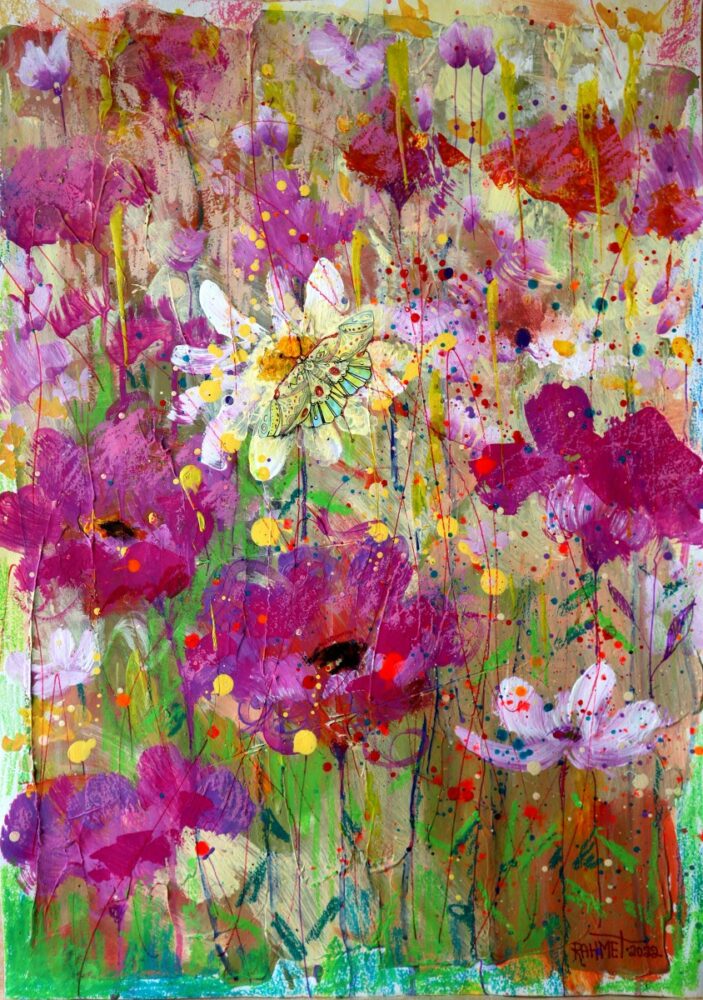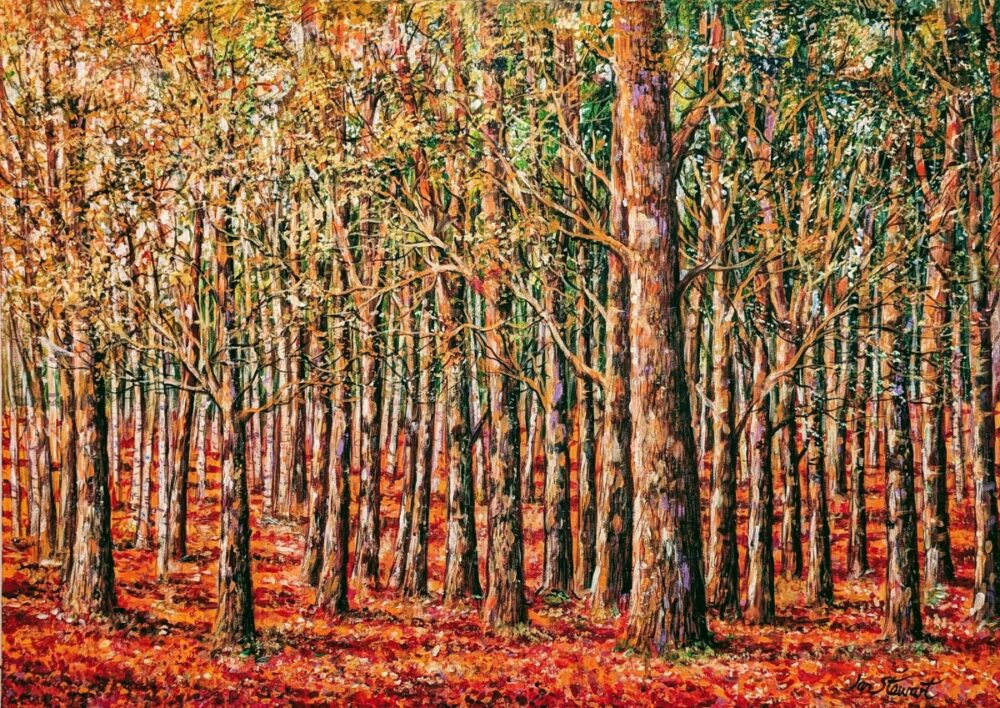Using different mediums to create artwork, such as oil paints or chalk, can result in wildly contrasting pieces, allowing the artist to add exciting textures and to build vivid colour, resulting in the type of original art that is for sale in our online art gallery!
Each medium has its own advantages and suits different scenes, emotions and focal points. For example, a sunset painted in watercolour could highlight the vibrant colours of the sun whilst using charcoals could show how a calm sky contrasts with a rough sea.
We love the range of effects that different mediums can create, which is why we host a wide range of work including intricate pencil drawings, traditional watercolours and abstract oil paintings for sale on our virtual platform. Read on as we give you a run through of why we think choice of medium matters!
Acrylic
Acrylics are perfect for artists wanting a versatile medium. Newer acrylics means that after waiting a short time you can paint a bright clean layer straight on top of another without muddying the colours, allowing artists can add some dimension. Depending on the amount of water used in the dilution process artists can also control how easy acrylics blend and how translucent they are, as this Art2Arts piece demonstrates, created using a simple palette of just four colours.
Oil
Oil paint is one of the best known mediums. It can be applied in various ways from thin, diluted glazes to thick layers, meaning it is a flexible tool. It also dries very slowly and paintings must be completed over several sessions resulting in a rich and textured appearance that many favour. You can see how layers have been built up simply by looking at this Art2Arts piece.
Watercolour
Coloured pigments are suspended in a water soluble solution to create watercolours – this means that artwork completed in this medium has a good clarity of colour. They’re also very versatile and a single tube of watercolour paint can be used to create many different shades. The vivid colours and painting techniques used in this completed piece perfectly captures the hummingbird and its movement.
Charcoal
Charcoal can be used to create contrasts within artwork, for instance mixing dark, defined lines with smoother, softer ones. It can also easily be blended and is often used to quickly sketch ideas, meaning that charcoal pieces often catch and express emotion. This contemporary drawing of a female nude shows how charcoal can be shaded to create light and dark, adding to the overall effect and shapes.
Pastel
Using pastels to create artwork results in a lovely velvety texture and deep, rich colours that can make the finished product really stand out and draw the eye. This stunning sunset pastel picture showcases exactly why pastels are used by so many artists. The bright orange and yellow is ideal for conjuring up memories of beautiful sunsets while the blended blues and greys create a calm but realistic seascape.







